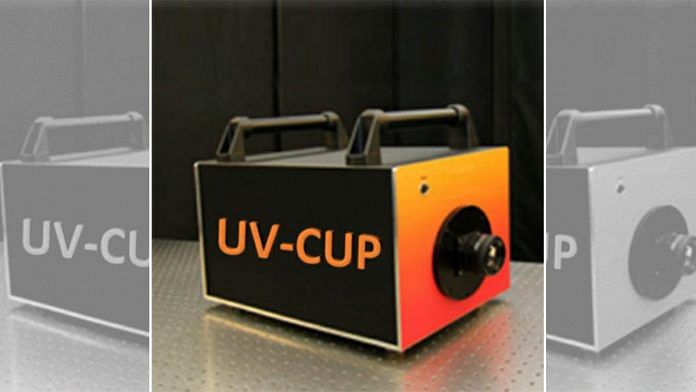New Delhi: Scientists have created the world’s fastest camera that can record photons flying in the ultraviolet (UV) range in real time. A photon is a tiny particle that makes up the waves of electromagnetic radiation. Photons have no charge or resting mass, and travel at the speed of light.
Using compressed ultrafast photography (CUP), the new camera, developed by a team from Canada’s Instititut National de la Recherche Scientifique, captures photons in real time with just one click. The information captured by the camera is first compressed into an image and then, using a reconstruction algorithm, it is converted into a video.
The camera, called UV-CUP, could potentially be used in medical imaging to diagnose diseases. More on New Atlas.
Fragments of Venus may have crashed on Moon
A new study reveals that some billions of fragments from Venus are likely to have crashed on the Moon.
According to a team of researchers from Yale University, asteroids and comets slamming into Venus may have dislodged as many as 10 billion rocks, some of which eventually landed on the Moon.
A growing body of research suggests Venus may have had an Earth-like environment billions of years ago, with water and a thin atmosphere. But in the absence of samples from Venus, testing such theories is difficult. Researchers believe that looking for pieces of Venus preserved in the lunar surface may be able to help them learn more about the planet’s ancient history. More on Space.
Scientists discover 24 ‘super habitable’ planets outside our solar system
Astronomers from Washington State University have identified 24 planets outside our solar system that they say may have conditions more suitable for life than our own.
These “super habitable” planets include those that are older, larger, slightly warmer and possibly wetter than Earth.
All the newly identified planets are more than 100 light years away. The team says that some of our future space observation efforts should focus on some target planets that have the most promising conditions for complex life. More on NY Post.
Large parts of Amazon rainforest could turn into savannahs
A large part of the closed-canopy Amazon rainforest is at risk of crossing a tipping point where it could become a savannah-type ecosystem, with far fewer trees, due to climate change and fires, a new study has found.
Rainforests are very sensitive to changes that affect rainfall for extended periods. If rainfall drops below a certain threshold, areas may shift into a savannah state.
The team believes that in around 40 per cent of the Amazon, the rainfall is now at a level where the forest could exist in either state — rainforest or savanna. Rainforests are home to many more and diverse species than savannah, and absorb more carbon dioxide from the atmosphere, so this development is worrying for the existence of a number of species. More on The Guardian.
New species of ancient marine reptile identified
Scientists have identified a new species of an ancient marine reptile that had a long, narrow snout and interlocking teeth, similar to the present-day gharials.
The reptile Gavialimimus almaghribensis is a type of mosasaur that lived between 72 and 66 million years ago, in what is now Morocco. There are over a dozen types of mosasaurs, which can reach 17 metres in length and resemble an overgrown Komodo dragon.
Researchers from the University of Alberta, Canada, say that the new discovery adds a layer of clarity to the food chain of the time.
So far, it looked like the era was overcrowded with mega-predators all competing for the same food, space and resources. But the long snout of this mosasaur reveals that it adapted to a specific form of predation within a larger ecosystem. In fact, there is evidence that each species of the giant marine lizard adapted for different prey.
The remains of the mosasaur identified included a metre-long skull and some isolated bones. There was nothing to explain the cause of death of the specimen, which was uncovered in a phosphate mine in Morocco. More on SciTechDaily.






